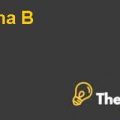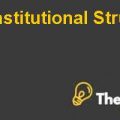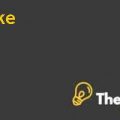
J.C Penney Company Case Solution
INTRODUCTION
The CEO of J C Penn (JCP) Ron Johnson had seen that in the past three years financial results of the company are declining. According to Ron Johnson that company has do some changes, so that financial result of the company should be increased. In 2012, Johnson decided to improve the company’s profitability through increasing in long-term debt. Wall Street is the analyst, He analyze the financial statements of the company, and recommended that company is facing liquidity problems, as the company sales and profit both are decreasing yearly. In 2012 the company has low cash balance it means Company is also notable pay their debt obligation, there is possibility that company will become bankrupt.
HISTORY
James Cash Penney founded in 1902, penny was using private-label brands. the company was very well known for its merchandise and exceptional customer services. In 1914, Penny had change the company name from James Cash Penney to J.C Penny. By 1929, Penny has expanded his business more than 1,000 stores. From 2008 to 2011 company was facing problems of credit crisis and economic downturn, but company effectively control these problems and grew their sales and income in 2007.
1. LIQUIDITY RATIOS:
This ratio shows how company is able to pay off its short term Debt. Higher value of ratio means larger margin of safety.
Current Ratio:
Current ratio measure how many current assets company has in order to pay their shot term liability. The bench mark of the ratio is 2:1; it means company should at least have two times of current assets to pay current liabilities. Hence, in this case of J C Penny, Current ratio of the company is more than 1. It means that company has current assets more than their current liabilities. In quarter1 and 2 of 2011 the ratio is more than 2, which indicated that company has more than twice current assets in order to pay current liabilities. In other quarters company’s current ratio is more than 1, which shows that company has enough current assets to pay their short term obligation.
Quick Ratio:
It’s also an indicator to find out company’s liquidity. Quick ratio is also known as acid-test ratio. This ratio measure that how many liquid assets company has to pays its short term liabilities. The bench mark of the ratio is 1:1. It means company should have liquid assets equal to the current liabilities. The higher the quick ratio, the better company liquidity position. Hence; JC Penny quick ratio is lower than 1 in all quarters it means that company has not enough quick assets to pay current liabilities. In quarter 1, 2011 the ratio is 0.83 which is lower than 1, that mean company has 0.83 of liquid assets available to cover each $1 of current liabilities. In other quarters company’s quick ratio has decreased which indicate company liquidity position is not good enough..........
This is just a sample partial case solution. Please place the order on the website to order your own originally done case solution













